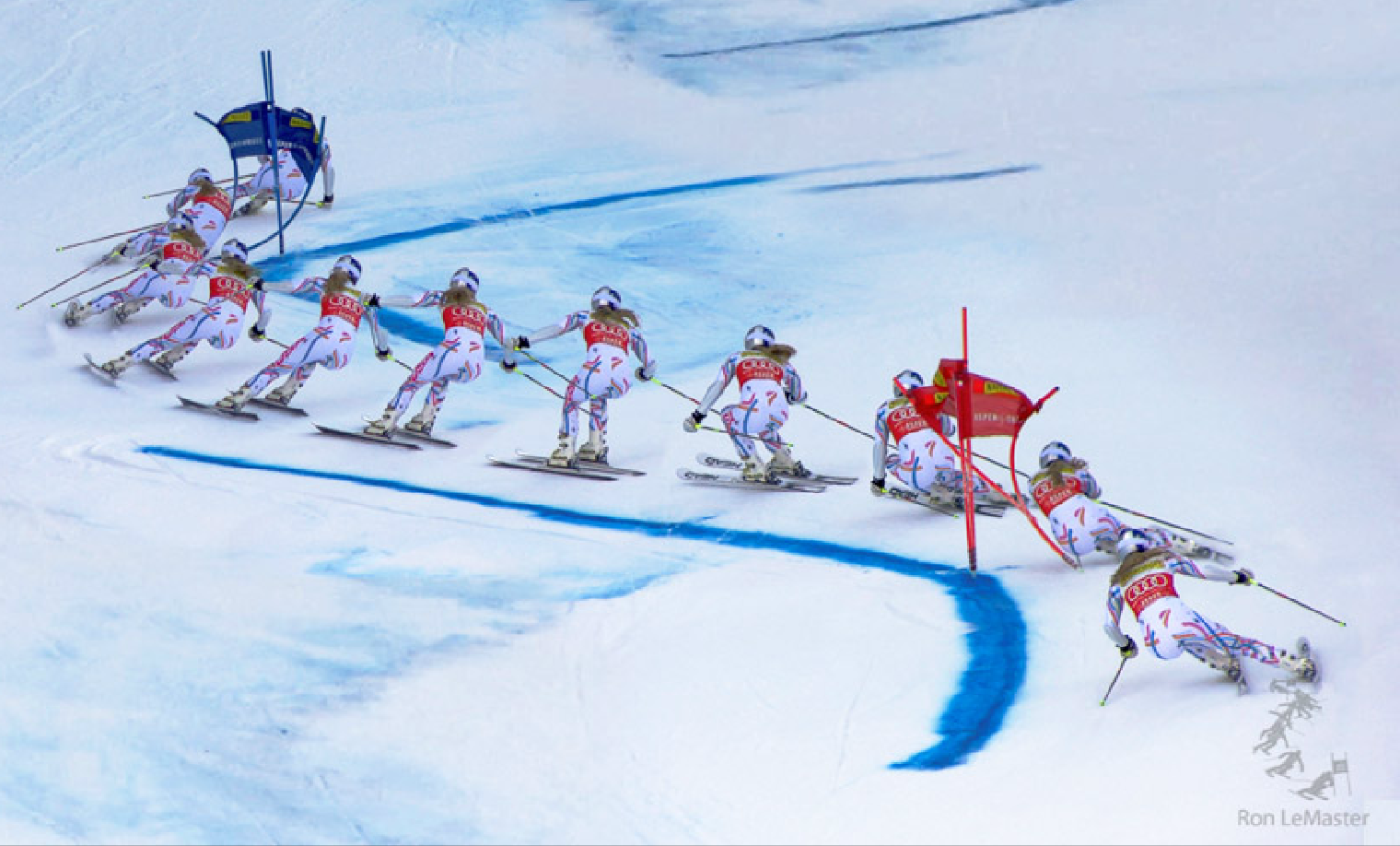Most diagrams and discussions of where turns start identify that as happening at the transition, which falls between one apex and another.

Transition is where the CoM and BoS change places, one passing over/under the other. This point falls somewhere between one apex and another. When turns are thought of as starting at transition, then some action by the skier happens there to initiate the new turn.

The size of the arrows in the image below show the center of mass crossing over the skis. It also approximates the relative sizes of the forces acting on the skis along their path. Conceiving of the turn as starting and ending at (or near) the apex would identify the turn as starting just after the force felt is at its highest. And that would mean some action by the skier happens there to initiate the new turn.

..........................................
Anyone want to discuss what circumstances on the hill make it beneficial to think of the turn as starting at or near apex instead of at transition?
I'm wondering if we can have a discussion about differences in these two conceptualizations, the intents that accompany the two concepts, and the differing actions a skier takes as a result of each. And why we sometimes choose to use one concept rather than the other.
Transition is where the CoM and BoS change places, one passing over/under the other. This point falls somewhere between one apex and another. When turns are thought of as starting at transition, then some action by the skier happens there to initiate the new turn.
The size of the arrows in the image below show the center of mass crossing over the skis. It also approximates the relative sizes of the forces acting on the skis along their path. Conceiving of the turn as starting and ending at (or near) the apex would identify the turn as starting just after the force felt is at its highest. And that would mean some action by the skier happens there to initiate the new turn.
..........................................
Anyone want to discuss what circumstances on the hill make it beneficial to think of the turn as starting at or near apex instead of at transition?
I'm wondering if we can have a discussion about differences in these two conceptualizations, the intents that accompany the two concepts, and the differing actions a skier takes as a result of each. And why we sometimes choose to use one concept rather than the other.
Last edited:
 .
.